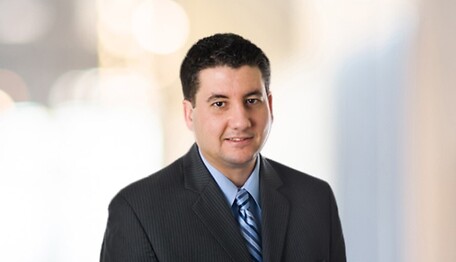West Virginia Addresses Its Strict Liability Standard
Working with an expert to support a product defect theory of liability is hard enough as it is. However, when the standard for strict liability is considered, properly supporting such a theory is even harder. A commonly overlooked aspect of products liability is knowing the specific state standard that needs to be met and preparing for such a standard with your expert. Upon review of a certified question from a federal appeals court, the Supreme Court of Appeals of West Virginia (Supreme Court of WV) recently addressed its standard for strict products liability.
In Judith A. Shears and Gary F. Shears, Jr. v. Ethicon, Inc., No. 23-192, 2024 W.Va. LEXIS 272, petitioners Judith and Gary Shears (the Shears) were several of more than 28,000 plaintiffs to file cases against respondent Ethicon, Inc. (Ethicon) alleging damages from the use of its Tension-Free Vaginal Tape. The Shears filed suit in the United States District Court for the Southern District of West Virginia (District Court), asserting claims that included strict liability based on a defective product design. Ethicon challenged the court’s consolidation of the case with others similarly situated, arguing that the Shears did not offer an alternative design that would have materially reduced the plaintiff’s injuries.
After the District Court ruled against Ethicon, the Supreme Court of WV published the West Virginia Pattern Jury Instructions for Civil Cases (PJI), which included an instruction on Design Defects and stated the following: “There are many designs which, although they may eliminate a particular risk, are not practicable to produce. To prove that a design is defective, [name of plaintiff] must prove that there was an alternative, feasible design that eliminated the risk that injured [him/her].”
Ethicon subsequently filed a motion for reconsideration, which the District Court granted. The case was then transferred to the United States District Court for the Northern District of West Virginia (Northern District), which eventually granted Ethicon’s motion to limit the testimony of the Shears’ expert because he failed to state that the proffered design would eliminate the risk. After a trial held before the Northern District – where the Shears proceeded on a malfunction theory rather than a design defect theory – the Northern District granted Ethicon’s motion for judgment as a matter of law on strict liability under the malfunction theory. The Shears’ appealed to the United States Court of Appeals for the Fourth Circuit (Fourth Circuit) and the Fourth Circuit certified the question of whether the relevant PJI represents controlling state law to the Supreme Court of WV.
Starting its analysis by holding that the subject PJI did not correctly express its strict liability standard, the court then looked to express the proper standard itself. Because precedent established a standard based on what a reasonably prudent manufacturer would do at the time, the court found this akin to an “alternative, feasible design.” Thus, it held that a plaintiff must establish an alternative, feasible design to support its prima facie case.
After addressing the first step of the strict liability standard, the court then looked to the second, more complicated, step. Specifically, it determined whether the proposed alternative design had to “eliminate” the risk. Looking to precedent, it again held that the “reasonably safe” requirement previously expressed by the court was something in between elimination and reduction. Thus, it found the appropriate standard to be that the alternative, feasible design should substantially reduce the risk of injury.
The holding of the Supreme Court of WV is crucial to the underlying case. As the Fourth Circuit now reviews the appeal before the court, it does so with a lower strict liability standard for the plaintiffs. While the case is still pending, the chance of the court granting the appeal and reviving the plaintiffs’ case is much stronger.
This case shows subrogation professionals how important knowing the different strict liability standards is for evaluating the strength of a case. In cases like the one at issue, it can mean the difference between a recovery and a dismissal. Experts should also be aware of the applicable standard when doing their investigation. The Shears case also shows how important it can be to challenge standards when they appear unsupported. Here, the standard set out in the jury instructions clearly had insufficient legal support. If the plaintiffs did not challenge its validity, their case would be closed.

